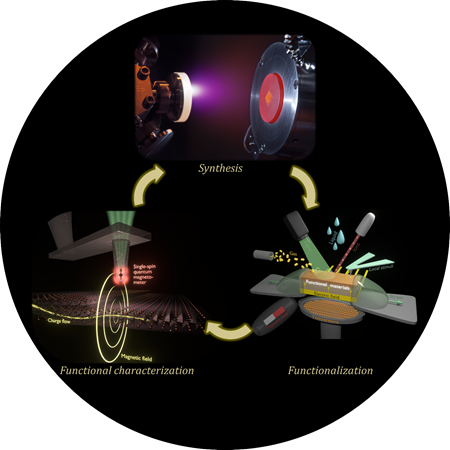
Research area: Stimuli/response characterization of novel oxide materials and devices and functional characterization with scanning magnetometry
Numerous of the greatest inventions made in our modern society rely on a single, unifying principle: An external stimulus is applied to a material/device, and the response is used to our benefit. The workhorse of the computer - the transistor - works by this principle: A voltage drop (stimulus) is applied to a current channel to control the current flow (response) used for making calculations. Solar cells use light (stimulus) to produce electricity (response). Displays use current (stimulus) to form light (response). In each case, the core functionality comes from a powerful response arising from a single stimulus, but in far fewer cases are two, three or more stimuli/responses used simultaneously.
I work on synthesizing novel electronic and magnetic oxides with low-dimensional confinement and study their functional response as one or more external stimuli are applied (see Figure). A particular interest is to synthesize new materials and devices with extreme sensitivity to magnetic field stimulus and employ these in scanning magnetometers. Scanning magnetometers equip us with a ‘magnetic sense’, which allows for visualizing hidden processes such as emergence of magnetic order and low-dimensional flow of charges buried inside condensed matter.
Start date of employment: 01-07-2013